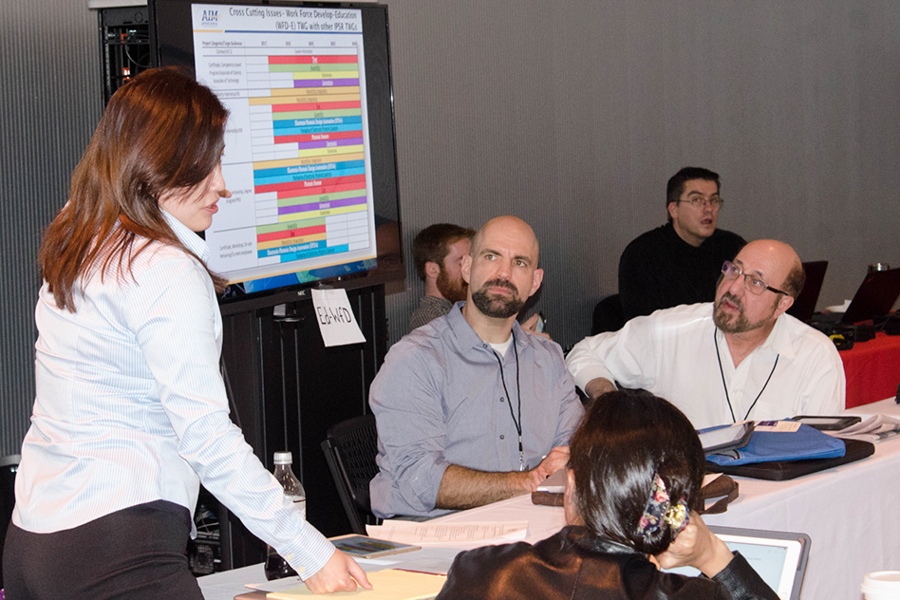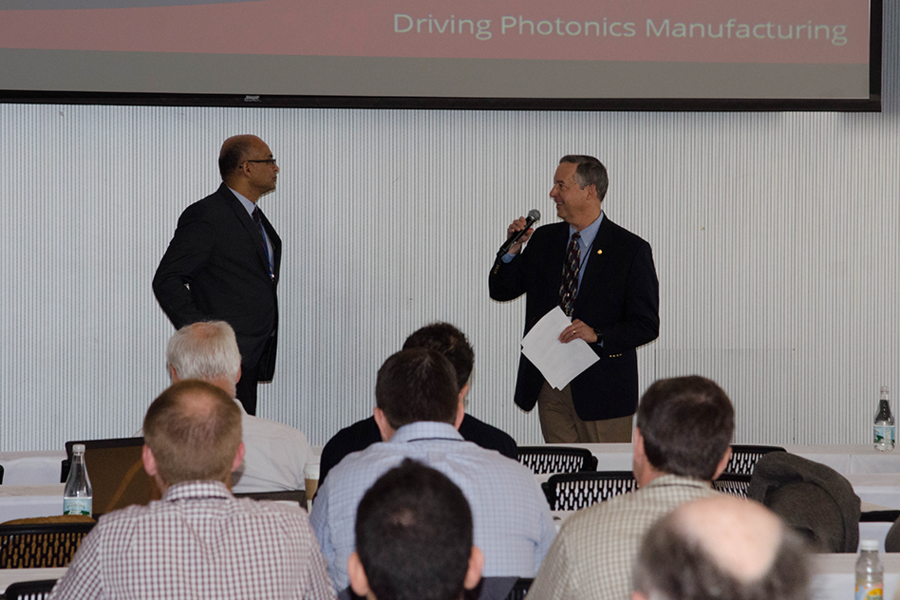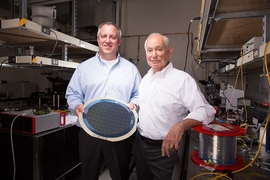Leaders from industry, state government, and higher education focused on the best ways to create a robust, integrated-photonics manufacturing corridor along Interstate 90 from Boston to Rochester, New York, on the final day of the American Institute for Manufacturing Integrated Photonics (AIM Photonics) fall meeting held at MIT Oct. 31 through Nov. 2.
“The meeting’s presenters showed that Massachusetts has strong capability in integrated photonics today, and that community colleges, manufacturing extension partnership programs, and small and medium enterprises can provide robust support to achieve the I-90 corridor for excellence in integrated photonics,” says Julie Diop, program manager for the AIM Photonics Academy at MIT. Integrated photonic systems use light pulses (photons) as well as electrical signals to process and communicate data within the same integrated circuit.
The AIM Photonics Academy, a part of AIM Photonics, has received $800,000 in state funding from the Massachusetts Executive Office of Housing and Economic Development for equipment to prototype integrated photonic devices on the MIT campus. “AIM Academy is creating a facility where professors, students, and industry can meet, design projects, and roll those projects into the curriculum. It’s one way to help foster the I-90 integrated photonics corridor,” Diop says.
Drawing about 145 participants, the first two days of the meeting focused on developing a technical roadmap for chip-making and photonic sensors, connectors, assembly, testing and systems packaging, as well as design automation. This Integrated Photonic Systems Roadmap, directed by Robert C. Pfahl Jr., will eventually align the integrated photonics supply chain for industry success.
The AIM Photonics fall meeting was a collaborative effort of AIM Photonics Academy, the Microphotonics Center at MIT, and iNEMI. About two dozen attendees joined the Massachusetts Integrated Photonics Manufacturing Supply Chain meeting on the final day. The meeting concluded with the first meeting of the AIM Academy Advisory Council.










